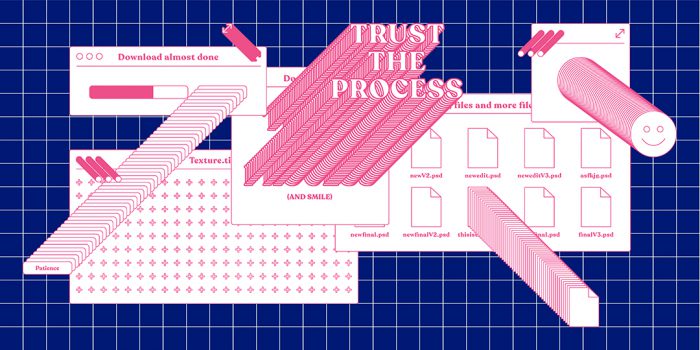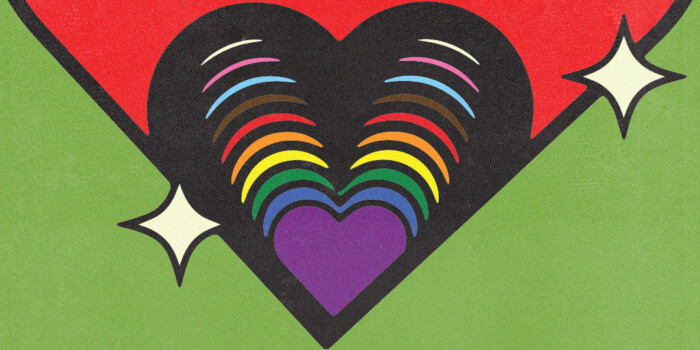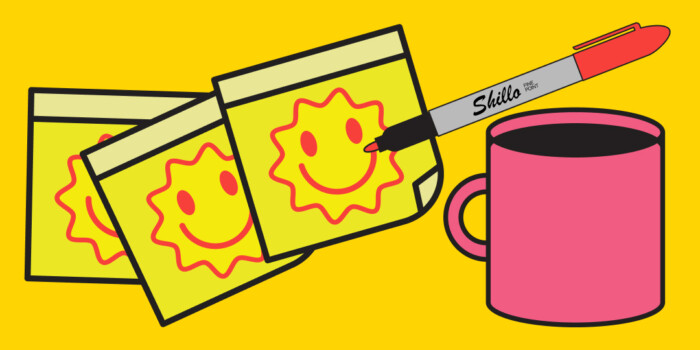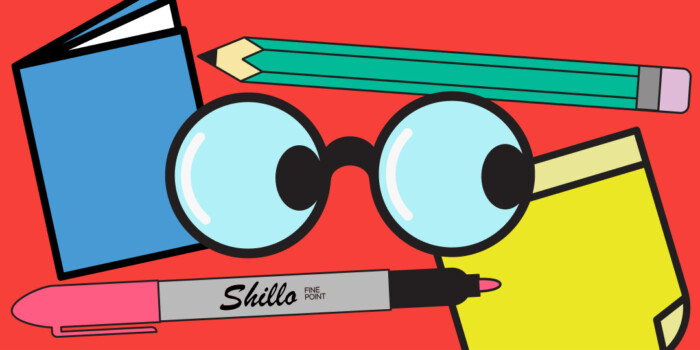11 Sketchbook Ideas & Drawing Tips for Graphic Designers
Approaching a brand new sketchbook can often evoke anxiety. Not wanting to tarnish that impeccable new page, worrying about making a mistake and having to erase the surface of paper into oblivion or just being afraid of your ability to draw. As hard as it can be to re-write anxieties sketchbooks are there to support the creative process, under no circumstances do they have to be considered works of art.
For those new to design or those just wanting to get a bit more from their sketchbook, we’ve compiled a helpful list of sketchbook advice for designers, featuring snapshots of Shillington London part-time teacher George Simkin‘s sketchbooks.
Scribble, shred, tear and crease—anything goes in the world of sketchbooks!
1. Start with a scribble
You’ve just bought a brand new sketchbook and now you have to go and ruin it by using it—the struggle is real, we know. If the thought of making that first blemish makes you recoil—an easy fix is to make a small scribble on the first two pages, you’ll feel broken in and ready to start adding life to every page.
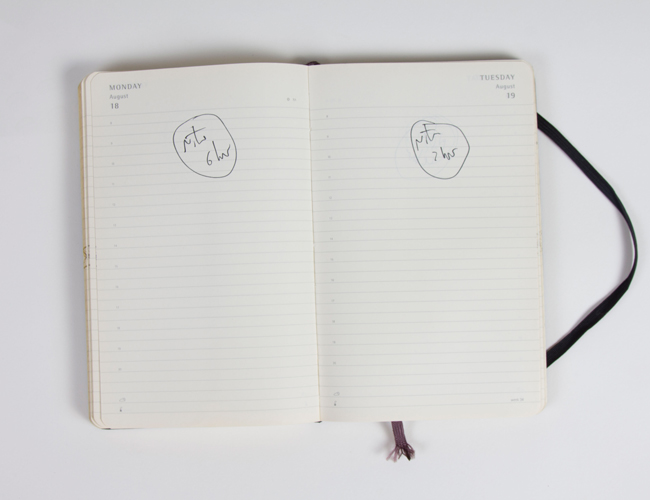
2. Throw order out the window
While we’re mentally trained to work chronologically within a book, sometimes this can be more of a hindrance than a help—especially when it comes to sketchbooks. Open at a random page and get stuck in, there are no rules—sketchbooks come without page numbers for a reason. Also, don’t give yourself a hard time over leaving blank pages—you’re the boss.
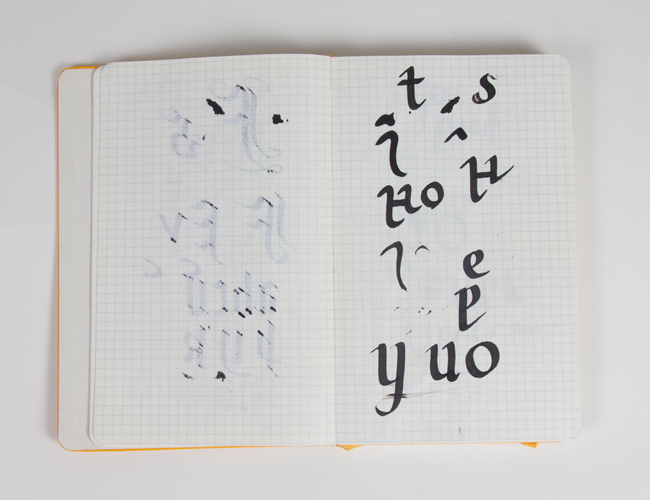
3. Size doesn’t matter
Some creatives feel most at home in a gigantic sketchbook while others prefer one they can slip into their back pocket. Try them all until you find the size that works for you. What’s most important is that you feel comfortable. Or you can always buy a couple, one for the studio and one for on the go!
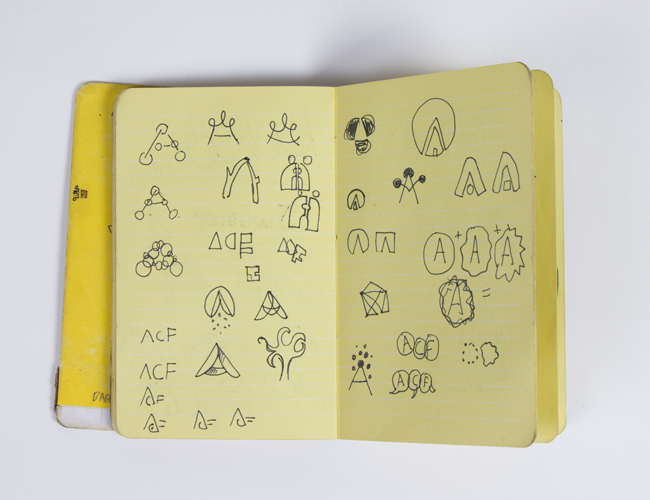
4. Mix up the mediums
The phrase ‘mark making’ is used for a reason—funnily enough it’s all about making that mark. Grab whatever medium is close to hand, it might even influence your eventual design. Don’t limit yourself to that one fine-liner or pencil—embrace the ink, crayons, charcoal and paint—or the box of matches if it calls for it, as seen in this example below.
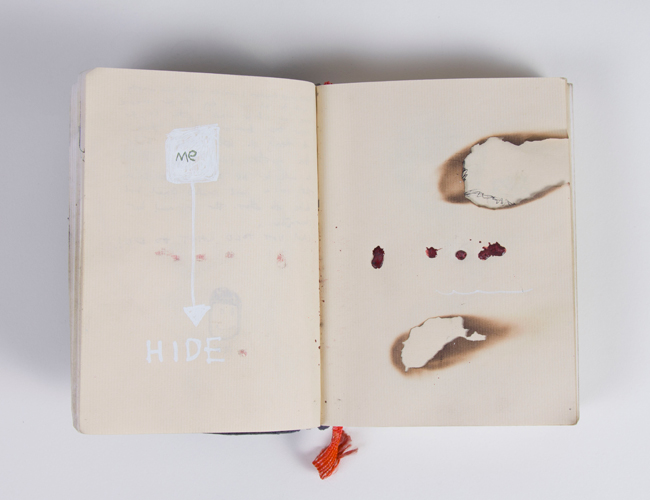
5. Develop your own visual language
While you’d traditionally associate sketchbooks largely with drawings, this doesn’t have to be the case. Some creatives like to develop their own formulas, incorporating diagrams, charts, lists or even graphs. Be inspired by how a chemist uses a medical journal, or how a geologist records rock samples—it’s all about creating a dialogue that works for you.
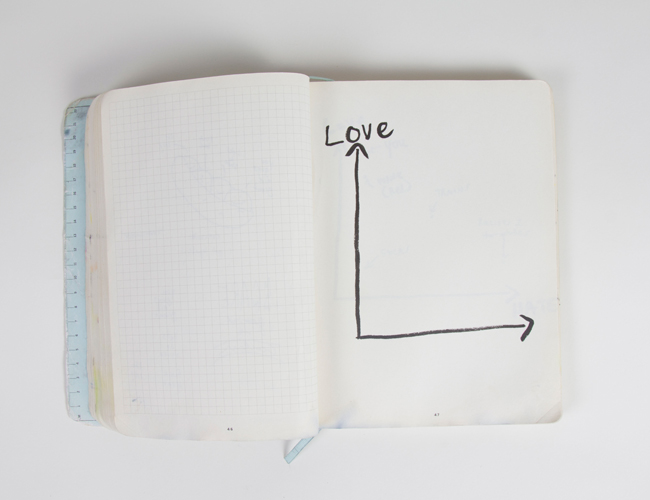
6. No need for labels
We can often trouble ourselves too much with labels and definitions. Is a sketchbook different from a Visual Diary? What about a notebook—where does that come in, and a diary? There’s no reason why you can’t fuse them all into one. Stick in an inspiring piece of physical design you picked up if it relates to an idea—it’s all visual language. As Shillington London part-time teacher Emma Stokes says on the topic of what’s in her sketchbook;
“Thumbnails for project ideas, lists of jobs to do, hours spent on projects, doodles, drawings and sketches, random ideas and thoughts, comments from clients, notes on briefs and everything in between, all of which fall onto the pages of these little grey notebooks.”
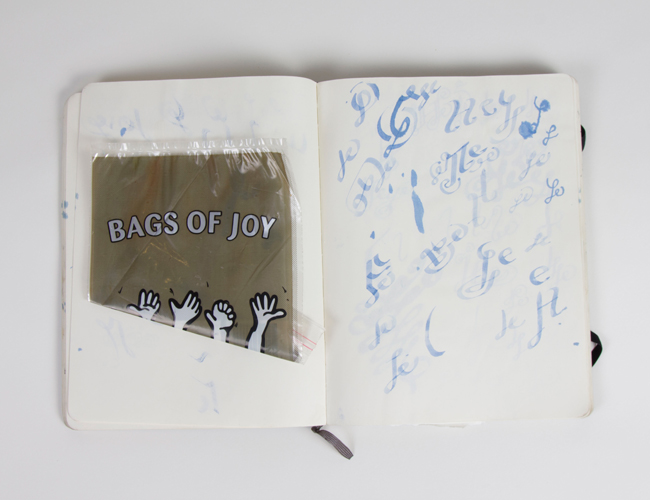
7. Personalise your pages
Just because you bought a sketchbook in a certain condition doesn’t mean it has to stay that way. Add in tracing paper for a variety of stocks, extend the pages to have more space to play, or tape 3 books together if you can’t bare to say goodbye. Don’t worry about a cracked spine or dog-eared pages but at the same time, it’s completely okay if you’re the type to laminate every paper product that comes your way. Sketchbooks should be lived in and reflect your creative process, so don’t shy away from shoving extra bits within the slip cover or colour coding if you’re that way inclined.
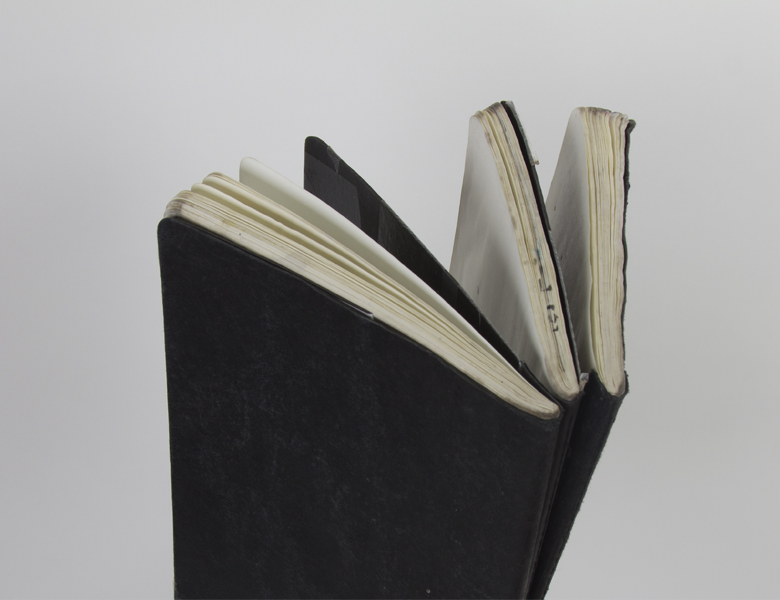
8. Start your own archive
Never, under any circumstances throw away a sketchbook. Disposing of a sketchbook is like setting fire to your hard drive—each papered body contains all your thoughts, ideas and drawings which you can revisit throughout your career. So hold them tight and don’t let go.
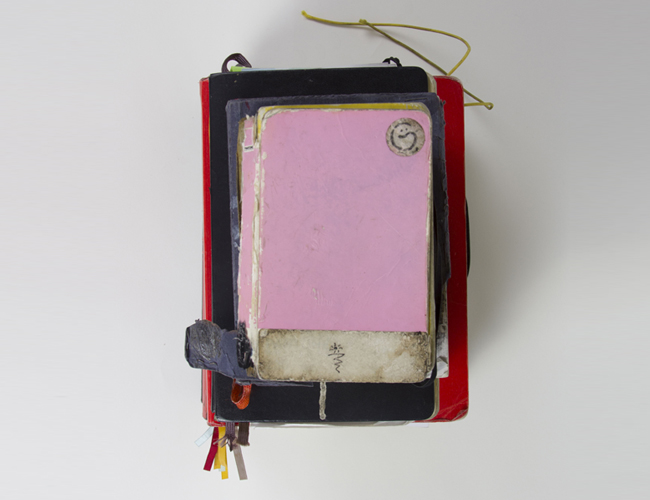
9. Create a dialogue amongst the pages
Think us crazy but there’s nothing wrong with talking to yourself in your sketchbooks, it’s a safe place. Amidst the bountiful sketches and thumbnails there’s nothing more cathartic than transcribing your thoughts. We’re not saying you have to start your memoirs or delve back into the emo heydays of 2005. But making notes on where you think your ideas are headed or how you foresee a design developing is very much encouraged. If you’re feeling self-conscious about someone reading it why not develop your own short hand, there’s nothing more fun than a secret code.
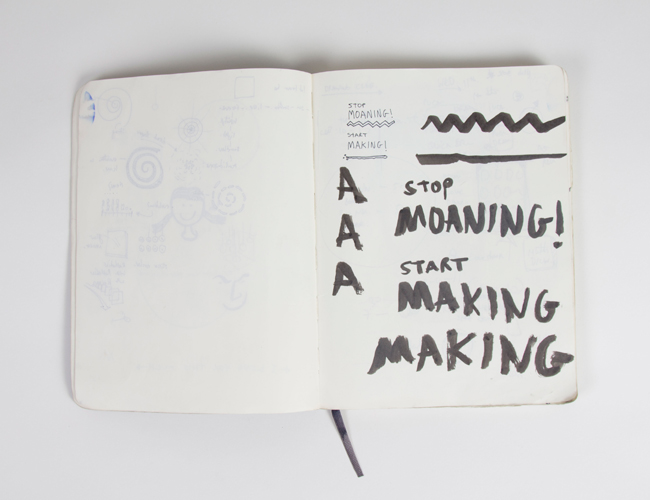
10. Stickman or draughtsman, it’s all fair game.
One of the most common questions people ask before starting at Shillington is “I’m not very good at drawing, does that matter?”—absolutely not. Sketchbooks don’t have to be teeming with beautiful draughtsmanship and renaissance oil paintings (that being said, they can be). The predominant function of a sketchbook is to act as a vehicle for a designer to record their findings—whether that’s a gestural sketch or a detailed diagram, whatever works best for you.
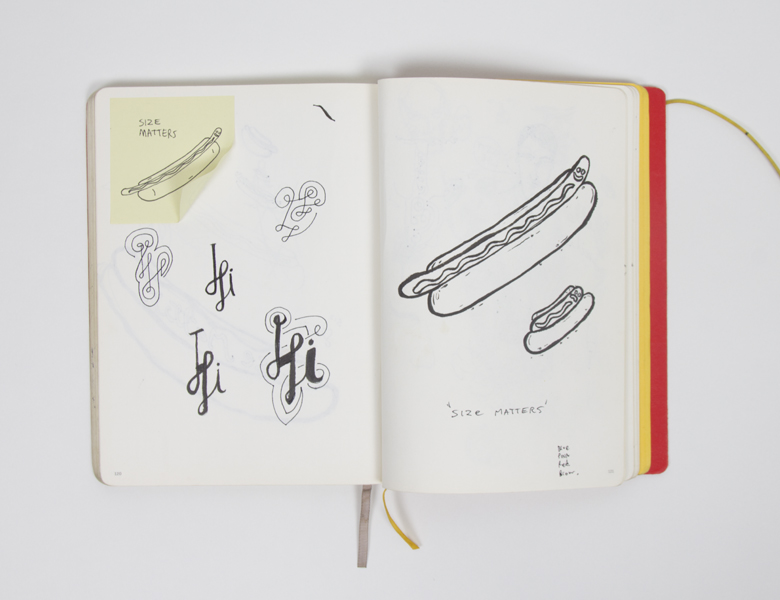
11. Have a peek at the greats
Nothing compares to a bit of research to get those creative cogs churning. Look to the legends to see how to really nail sketchbooking. Design hero Lance Wyman is particularly well known for his extensive sketchbook usage and diary keeping, where he recorded all of his creative processes and ideas. Unit Editions have catalogued Lance’s inspiring scribbles in one fascinating book, Lance Wyman: The Visual Diaries 1973—1982.
New to the Shillington Design Blog? We have a hoard of resources to help encourage and direct young designers as well as lots of inspiring interviews with industry.
If you’re thinking of making the switch to a creative career then why not discover more at one of our Info Sessions? We have campuses in London, Manchester, New York, Melbourne, Sydney and Brisbane—find out which one would suit you best on our website!
Want to win some amazing prizes and stay in the loop with all things Shillington? Sign up to our newsletter to automatically go in the draw.


